Cusco: A Hybrid of Inca Culture and Spanish Influence
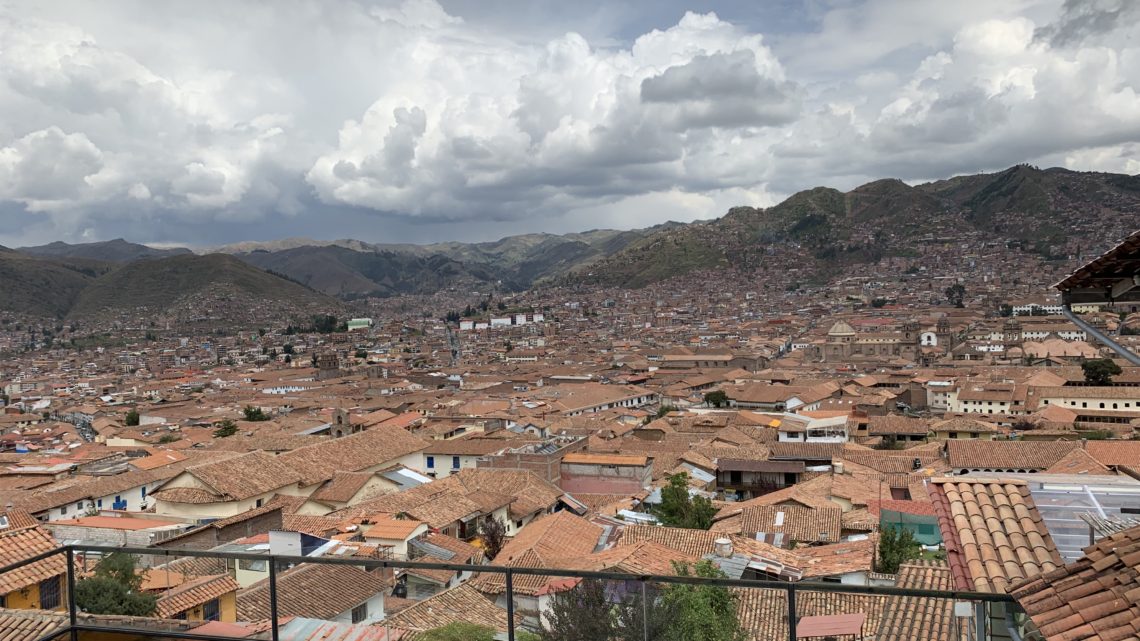
When people visit Peru, Machu Picchu is often the first place that crosses their minds. In order to reach the ancient Inca Citadel, travelers must pass through Cusco: the capital of this former massive empire. This historical city is more than just a base for exploring the surrounding areas. Throughout the city, one can discover ancient and colonial architecture, breathtaking scenery, and a strong Andean Culture.
Thankfully, I allotted myself two full days in this region before setting off on a four-day trek to Machu Picchu. After a short flight from Lima, I arrived in the Andes at an elevation 11,152 feet above sea level. From Cusco Airport, I hailed a cab to my hostel, which was located about five minutes from the city center.
An Evening Barbeque
I arrived at my hostel and was greeted by another friendly group of staff. After dropping off my suitcase and hiking gear, I headed downstairs to the courtyard just in time for a barbeque. For a small price, the staff made us a delicious meal of traditional Peruvian food. The hostel also had a two for one happy hour deal, where I had two
At the barbeque, I met other travelers from Canada, Denmark, the U.K., Ireland, and Brazil, to name a few places. Much like my experiences while traveling in Europe, there seemed to be fewer Americans traveling the world, but plenty of foreigners. And also like Europe, everyone was friendly and eager to get to know each other. Although there was a crew going out, I decided to take it easy in order to maximize my sightseeing time the following day.
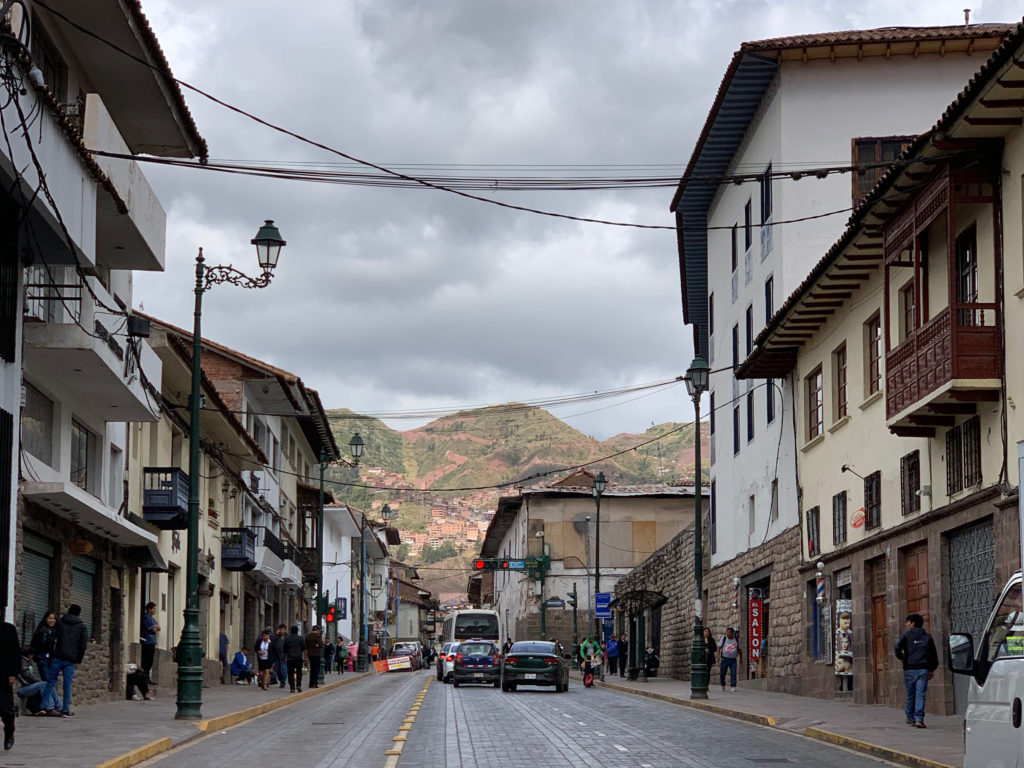
The next morning, I began my walk towards Cusco’s Plaza de Armas in order to seek out a free walking tour of the city. Throughout my travels, I had participated in tours like these in Brussels, Barcelona, and Lisbon, and always found them to be one of the best ways to explore a new city while meeting other travelers.
Plaza de Armas – Cusco
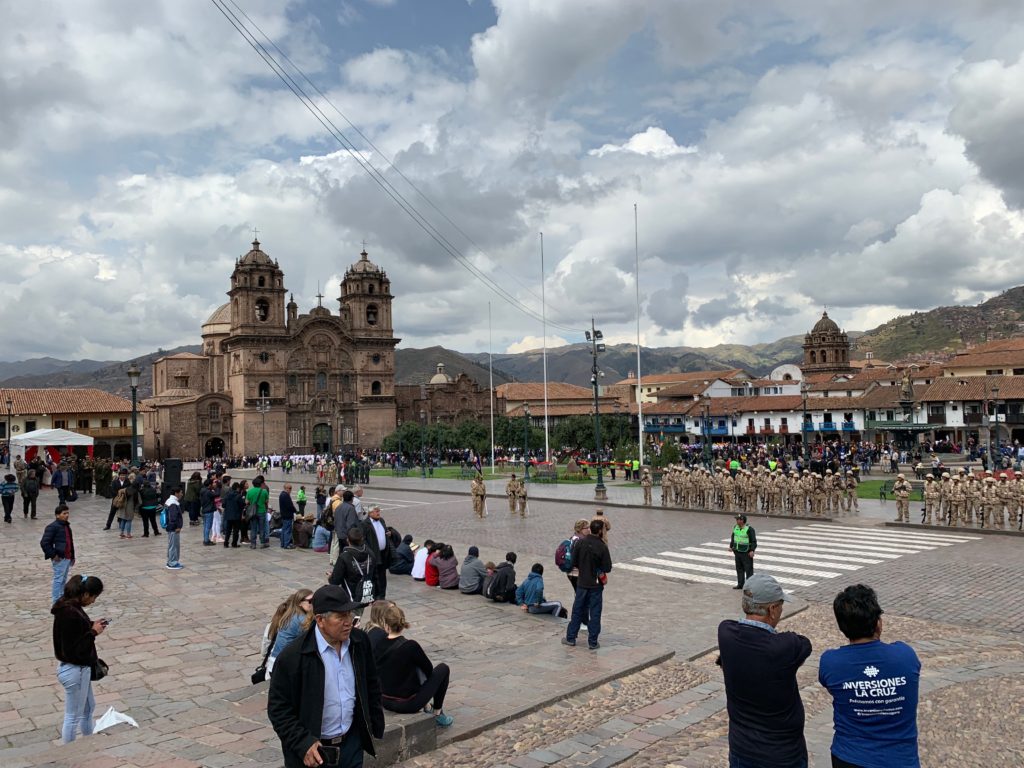
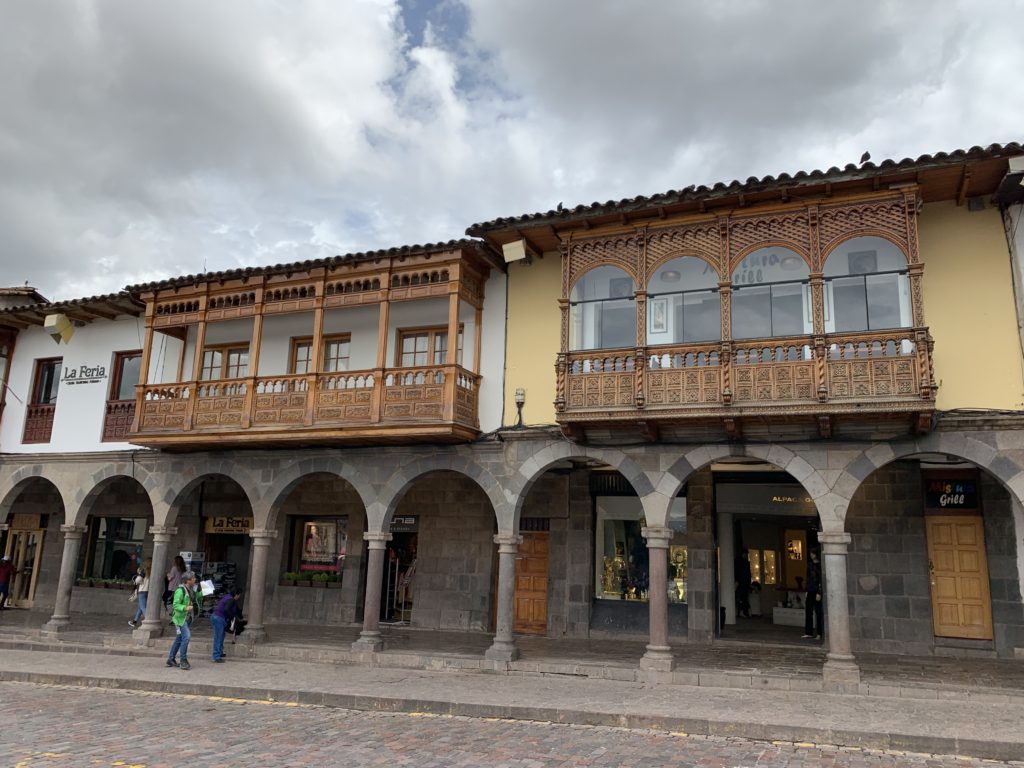
When I arrived at the plaza, a man in a red t-shirt escorted me to a group of other travelers. He introduced us to his associate, who began our tour at this beautiful plaza. As the heart of the city, the Plaza de Armas is home to two magnificent churches and is surrounded by charming colonial buildings.
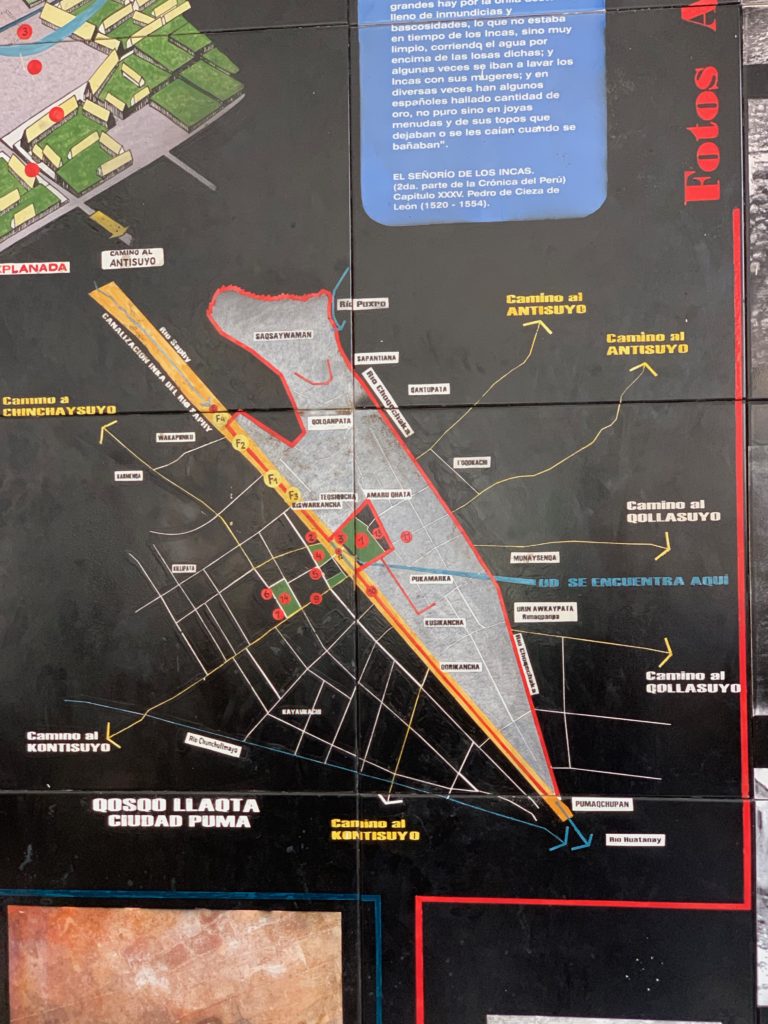
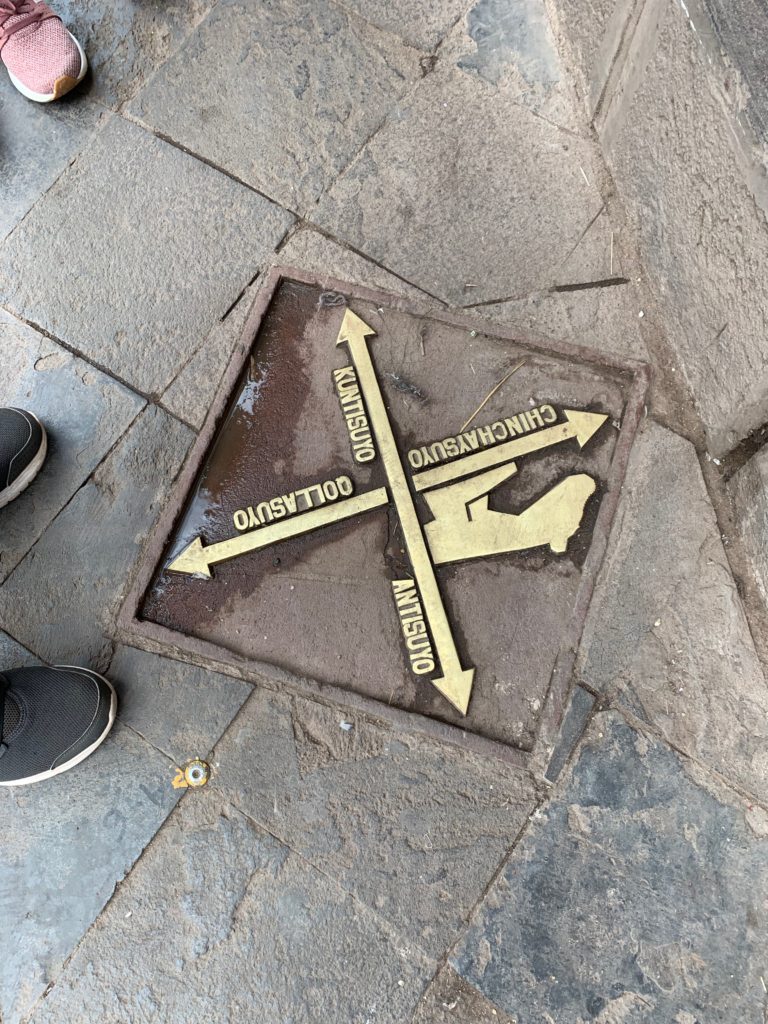
After the guide rounded up our group of travelers, we proceeded through the narrow streets of the Inca capital. We passed by a map of the city, which is laid out in the shape of a puma. The head of the city is the Sacsayhuamán ruins. On the ground, there was a plaque marking the geographic center of Cusco.
A Unique Style of Architecture
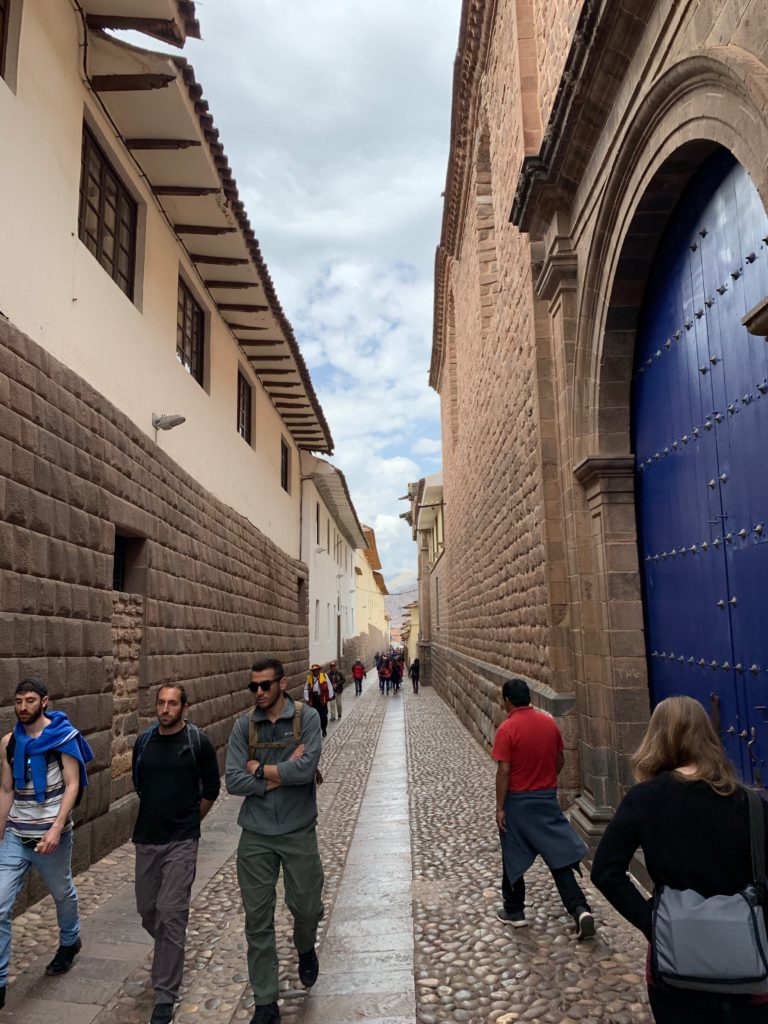
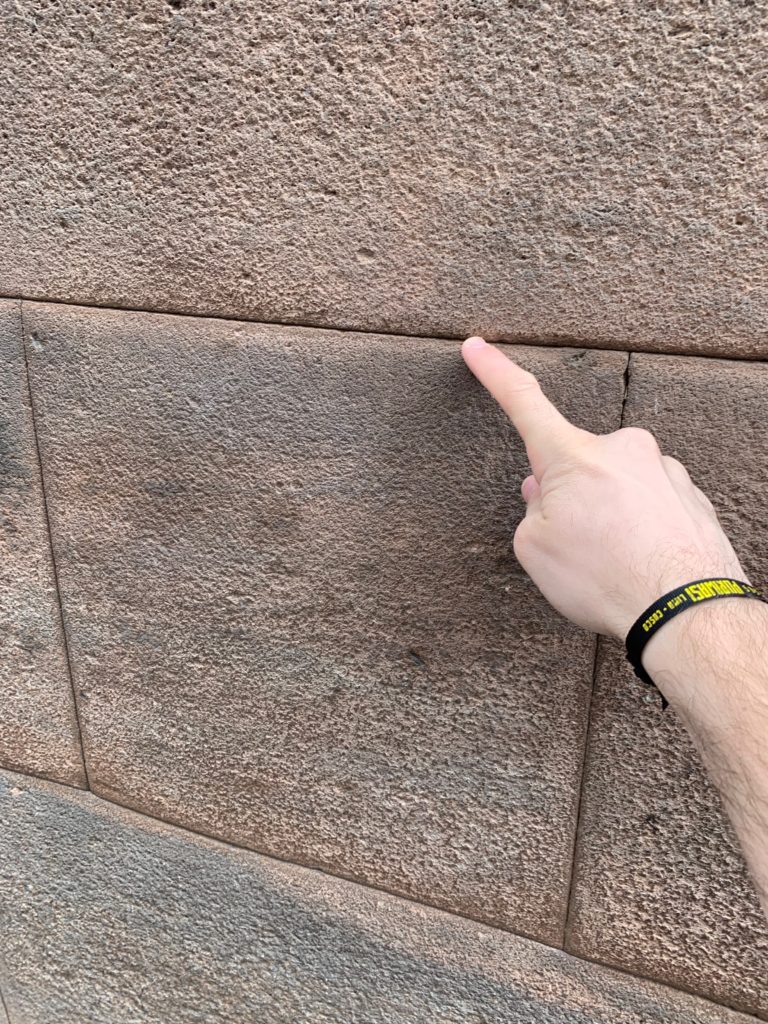
The architecture of this city is like nothing else I have ever seen. The Incas built almost everything out of large stone blocks, which seamlessly fit together without any mortar. I could barely rub my finger between the heavy blocks. Above the original stones, however, the buildings stay true to the Spanish Colonial style. The buildings are beautifully finished with white stucco, wooden balconies, and red-tiled roofs. The styles seamlessly blend together, making the architecture here truly one of a kind.
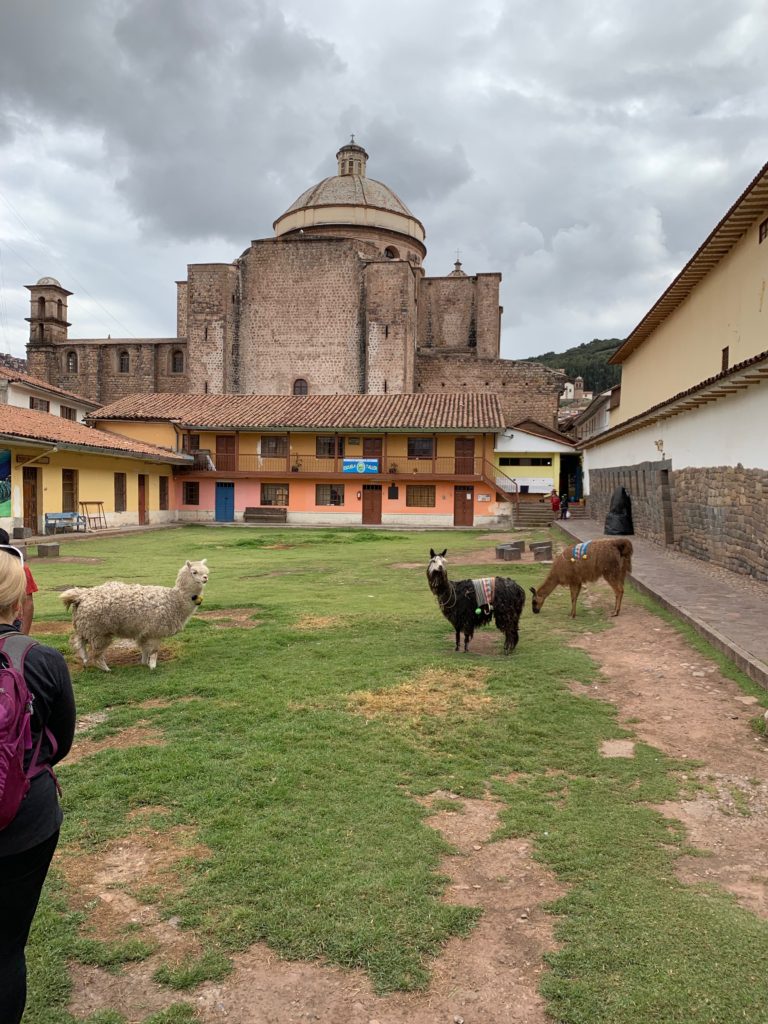
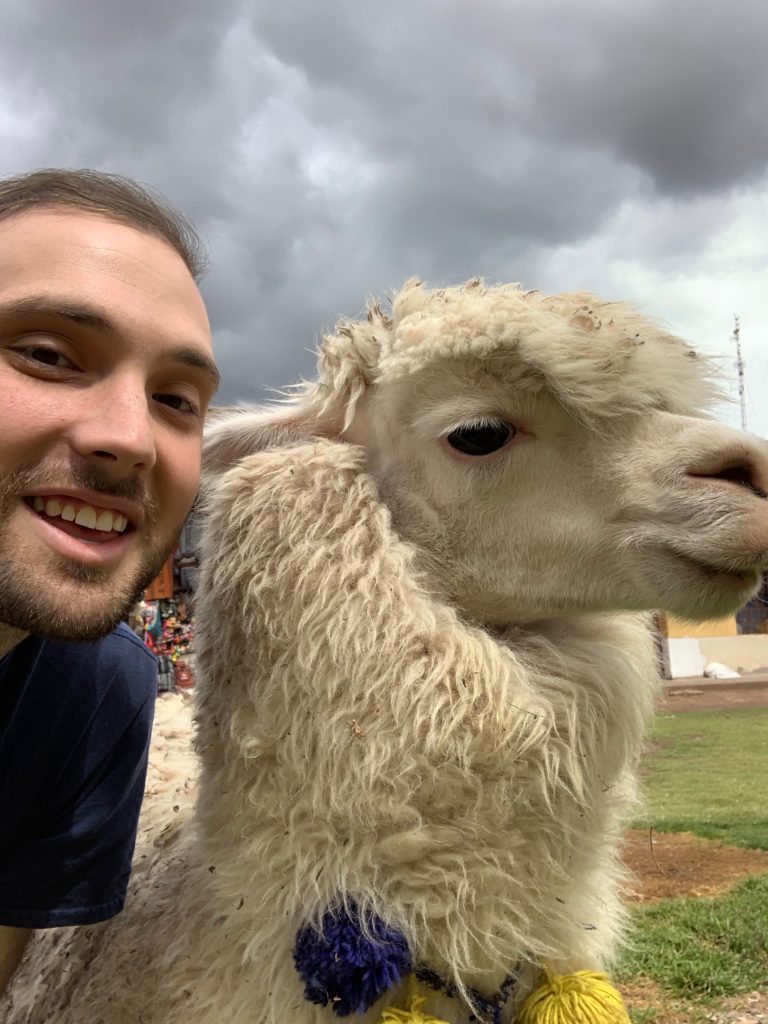
Our guide veered off the main street into a grassy courtyard. The surrounding homes were filled with locals selling their alpaca wool merchandise. We even got to get up close to some alpacas themselves! Our guide explained the difference between a llama and an alpaca. While I will never fully understand how to tell them apart, they are cute nonetheless!
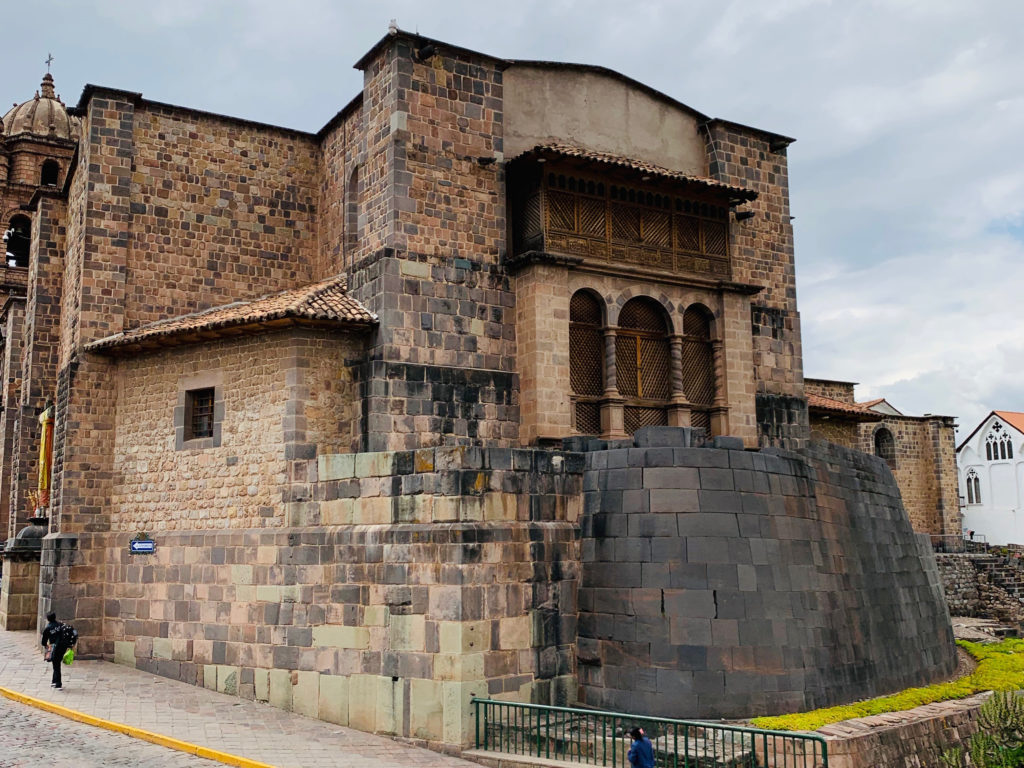
At the end of the street, we arrived at the most sacred temple in the entire Inca Empire: Qorikancha. This ancient site was dedicated to Inti, the Inca sun god. The Incas built the site with precise ashlar masonry. Although it was difficult to construct, the Incas mastered the ability to use precise stones to form a perfectly curved foundation. It looks as if the stones were prefabricated to form this precise curve, and it is hard to believe that the Incas were able to do this by hand. Although the Spanish destroyed the ancient temple in the 16th century, the foundations remain intact and were incorporated into the Convento de Santo Domingo church.
San Blas
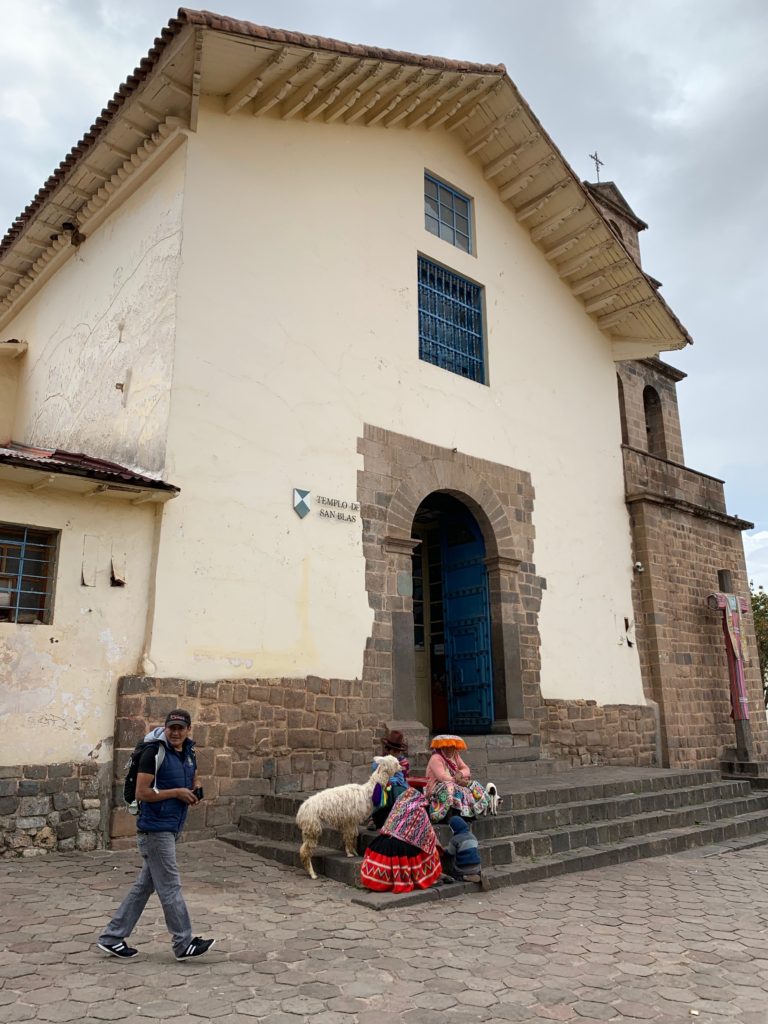
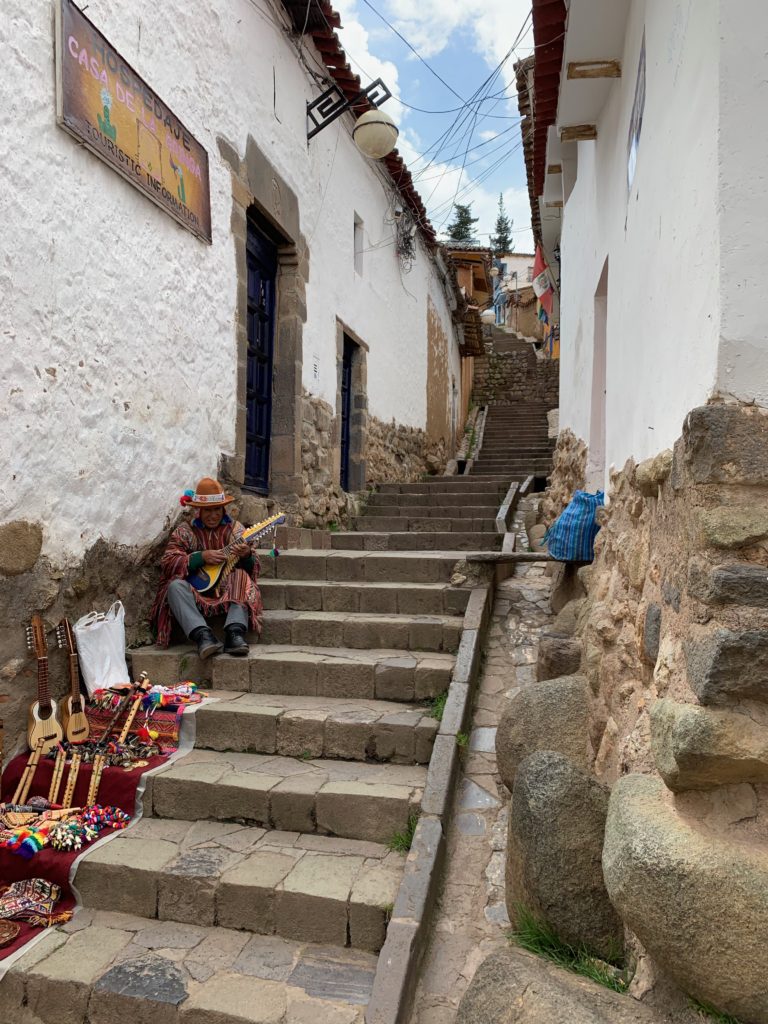
From here, we continued into Cusco’s San Blas neighborhood. This area is one of the most picturesque in the city, with many artisan shops and the city’s oldest church. Similar to Santorini and Lisbon, the streets of this district are narrow and steep, often containing stairs. Our group ascended to the top of the neighborhood. Due to the thin air, walking up these stairs felt like an intense workout.
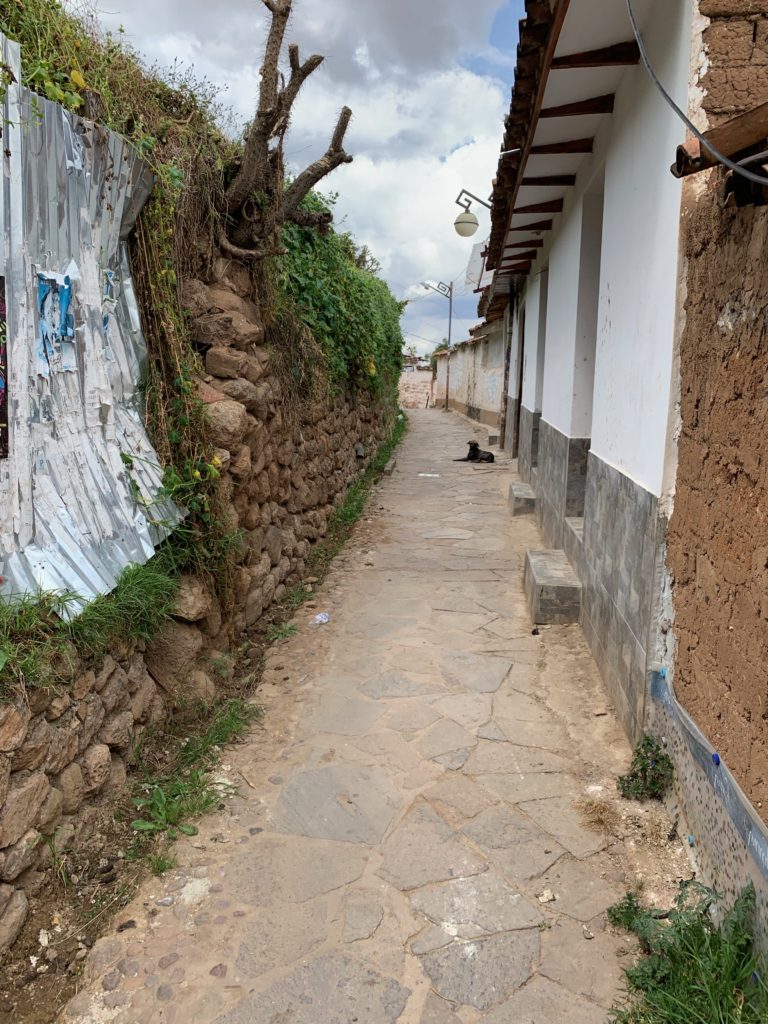
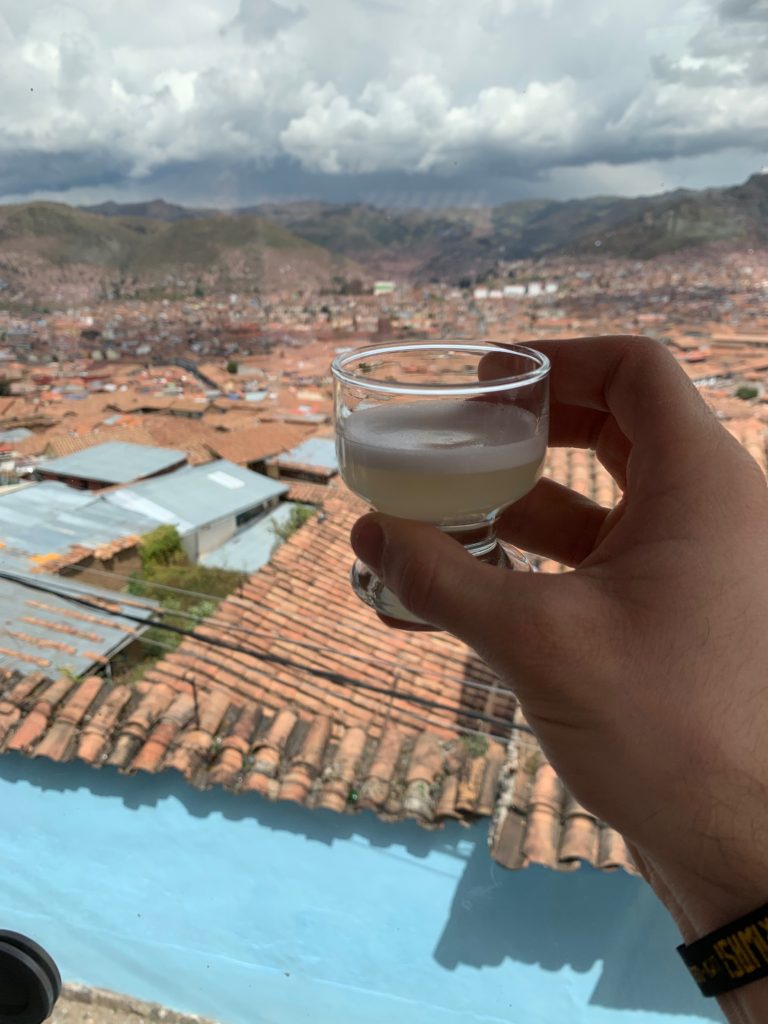
However, it was worth it in the end for a gorgeous view of the red-tiled city and the surrounding mountainscape. Cusco looks as if it was meant to be in this setting, as the red tiles blend seamlessly into the earthy terrain around it. Our guide took us to one final stop at a small restaurant in this area. We learned about how the locals make their pisco sours. The bartender mixed pisco, lime juice, syrup, and egg white into a smooth and flavorful cocktail. Our group made a toast to new experiences in a beautiful setting.
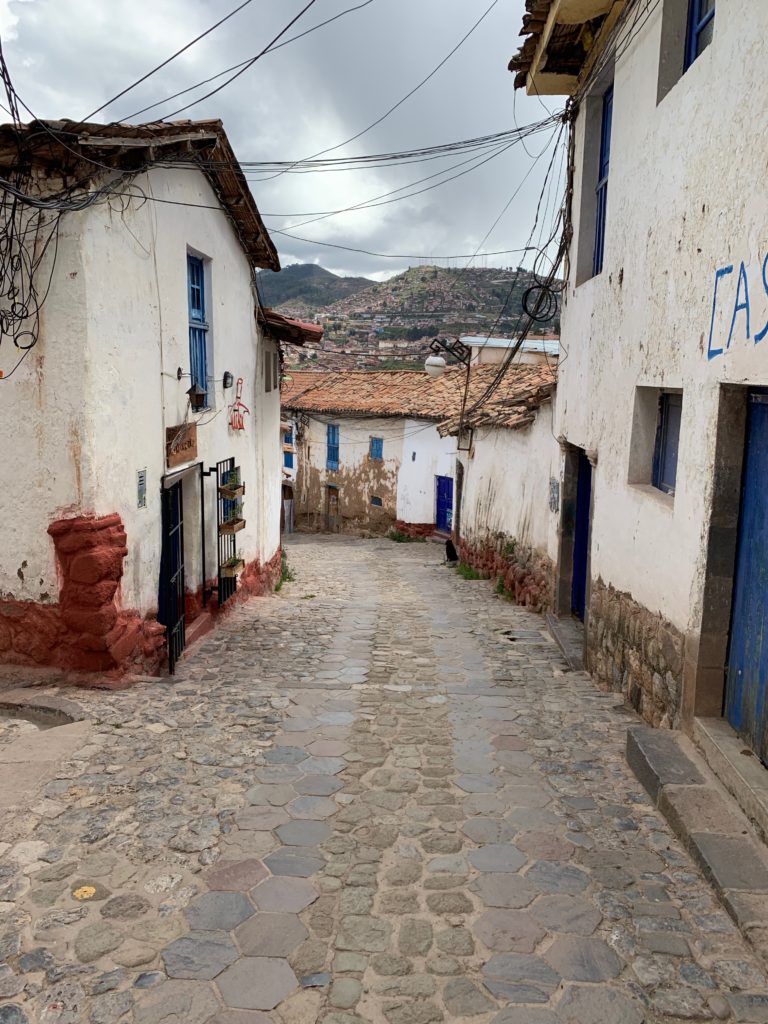
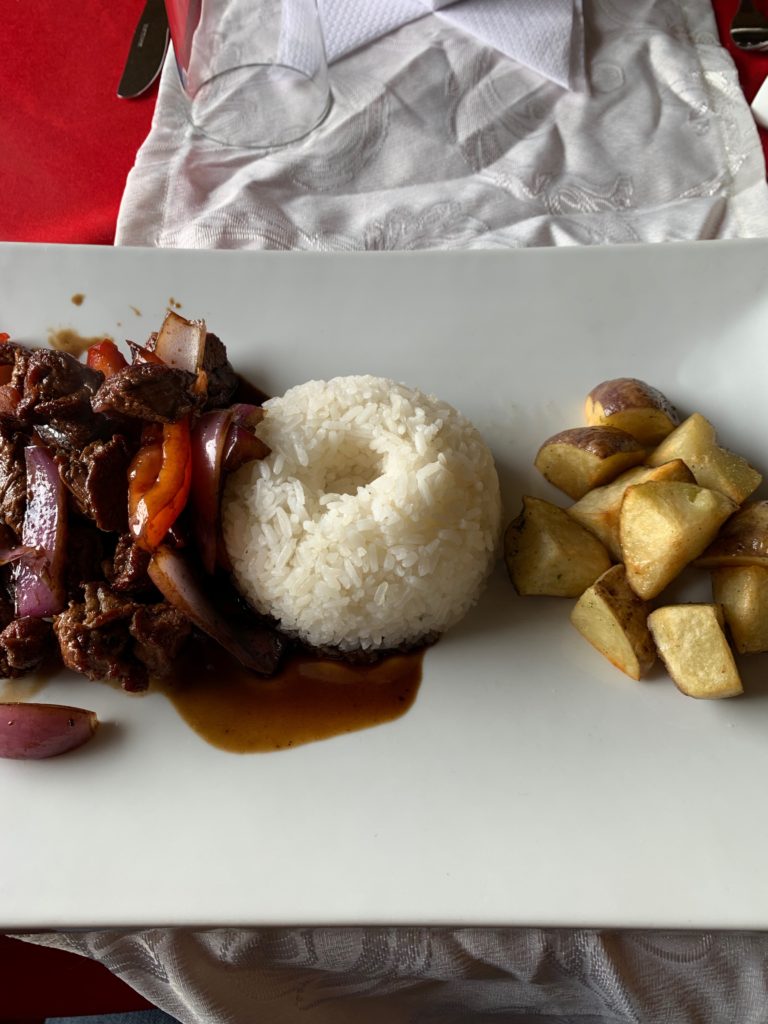
After the tour, I decided to look for a place to eat in San Blas, as our guide said that there were plenty of good and inexpensive restaurants in the area. I dropped by a small restaurant, where I ordered alpaca meat. It was a flavorful alternative to beef and was served with rice and potatoes, all for less than 10 USD.
Cusco’s Religious Sites
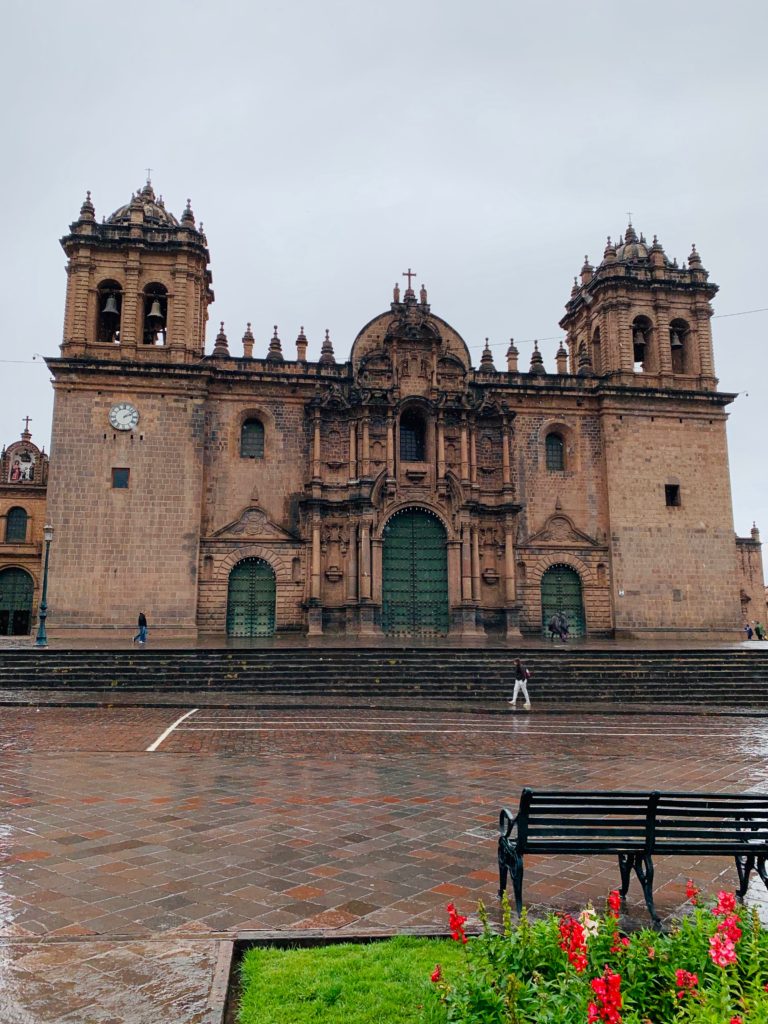
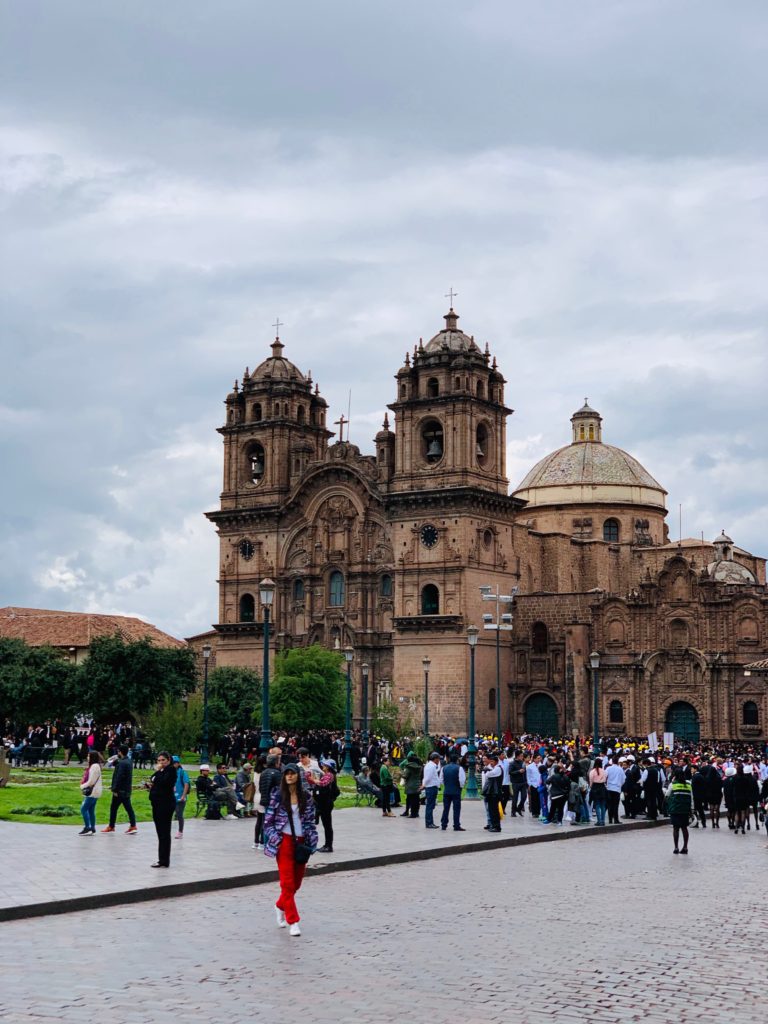
As the afternoon approached, I walked back down to the Plaza de Armas. Unfortunately, it began to rain, making it the perfect time for me to drop inside two of Cusco’s most beautiful buildings: Cusco Cathedral and Iglesia de la Compañía de Jesús. Unfortunately, I was not allowed to take pictures inside either church.
Cusco Cathedral is the larger of the two buildings. Completed in 1654, the church is a fine example of Gothic-Renaissance architecture, with Baroque-inspired ornamentation. The wide front façade is lined with two bell towers, much like the Cathedral of Lima. Inside, the church is filled with beautiful artwork and towering arched ceilings.
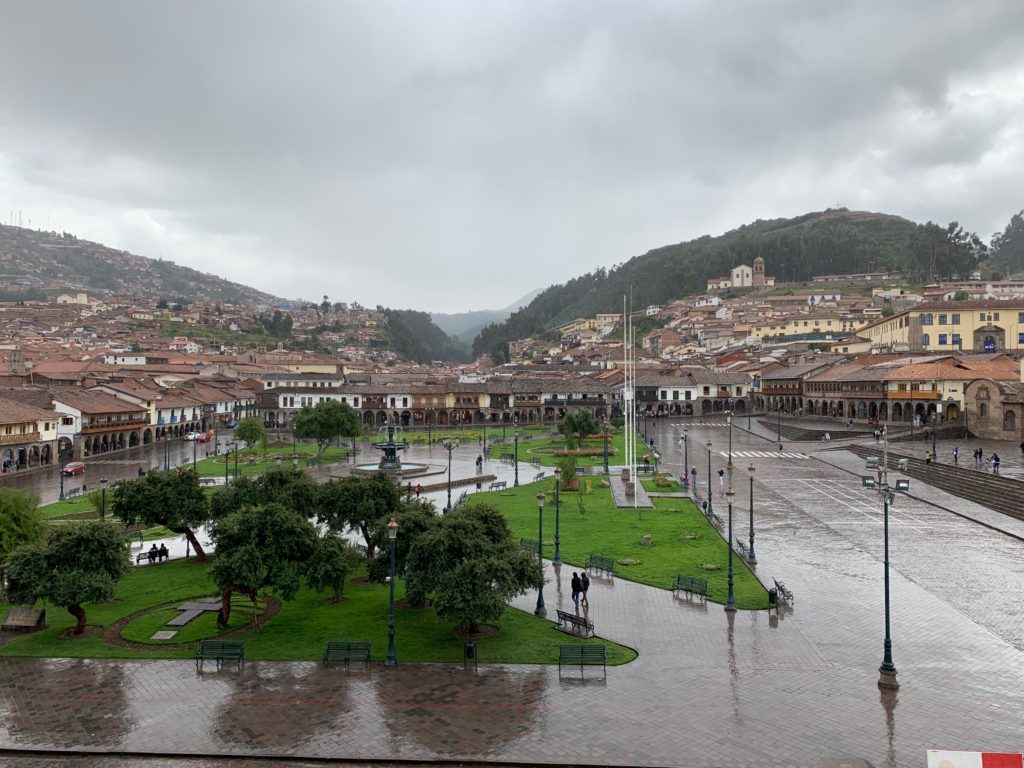
Iglesia de la Compañía de Jesús, the smaller of the two churches, is a fine example of Spanish Baroque architecture. This church was finished shortly after the neighboring cathedral and shares the same brown colored stone exterior. Also like the cathedral, it boasts two bell towers. However, the front façade is more richly ornamented, with dramatic carvings above the front entrance. Inside, the church features a single central nave with arched ceilings. Visitors can ascend up to the base of the clock towers for a panoramic view of the Plaza de Armas.
San Pedro Market
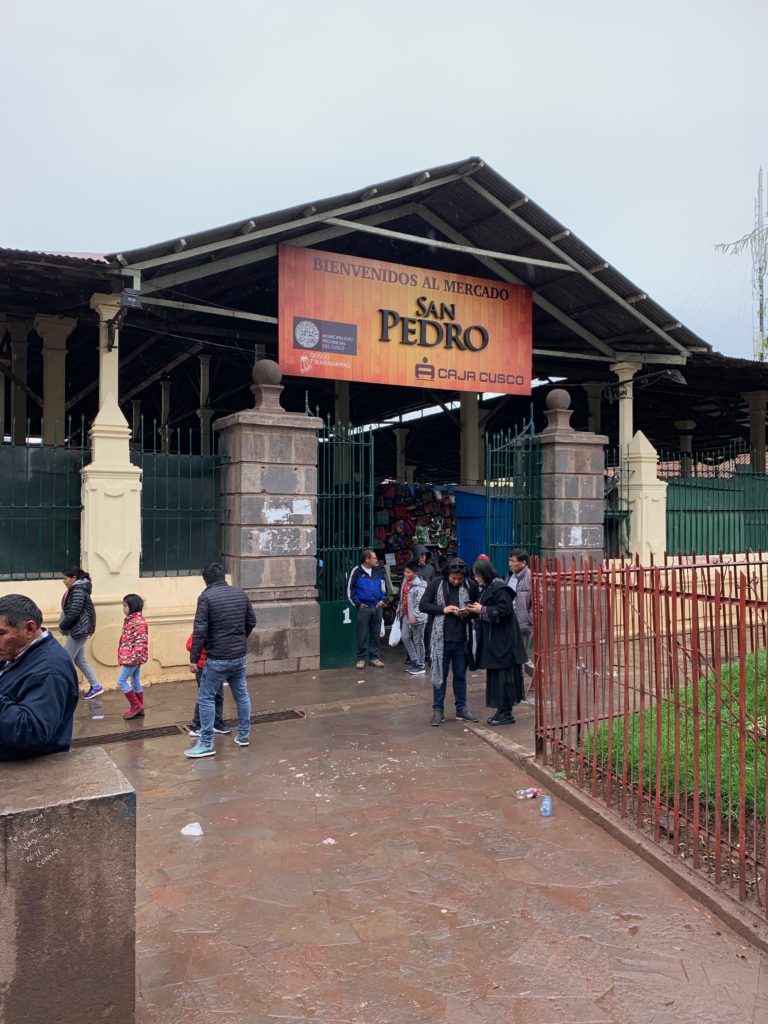
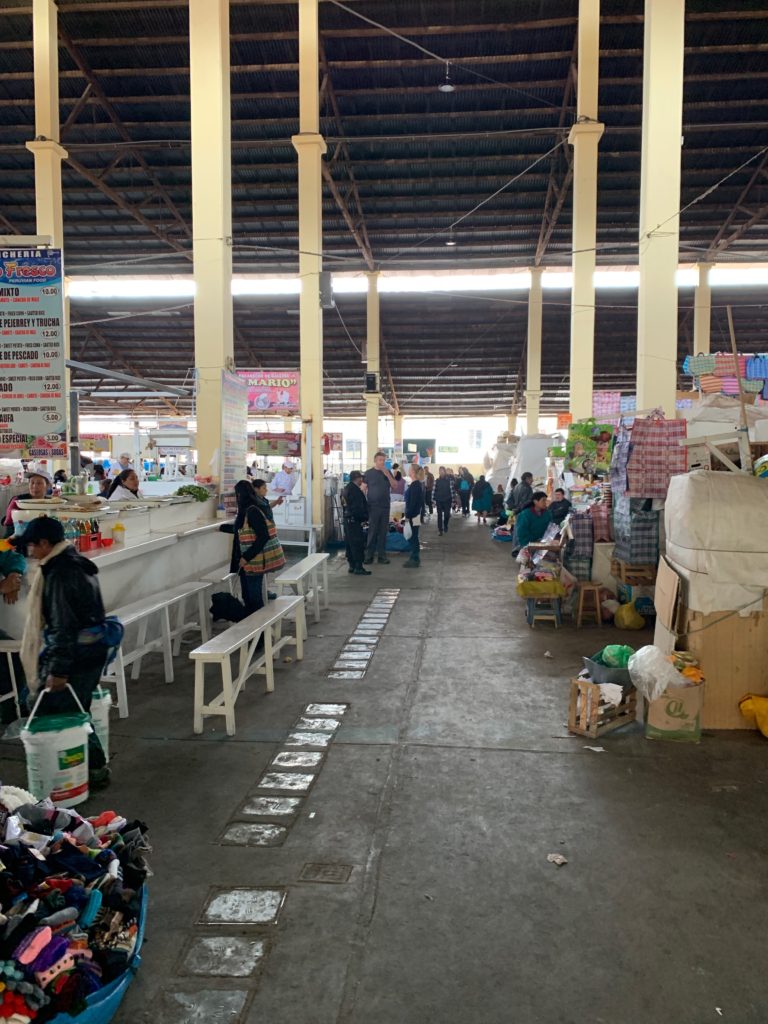
After my exploration of these two important religious sites, I took another walk around the streets of central Cusco. I arrived at the San Pedro Market, where a variety of food and other goods were on sale. I decided to buy an Alpaca sweater and a beanie hat for my upcoming trek, both of which are unique Peruvian souvenirs.
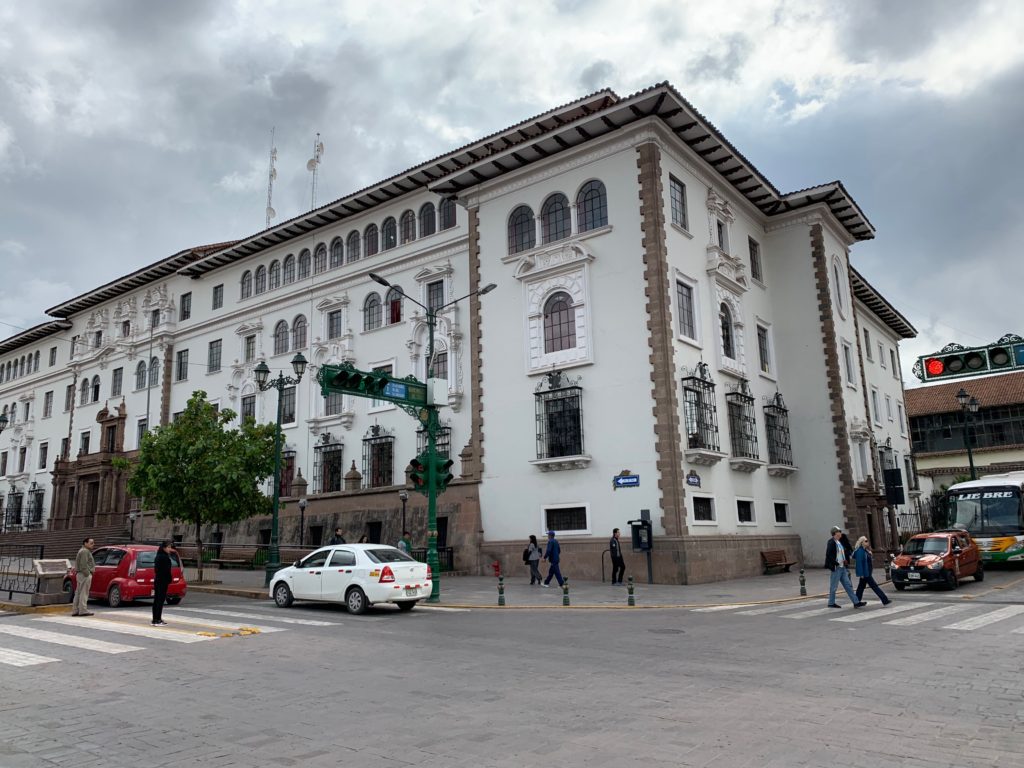
Cusco is a city that deserves more time than just a pass-through for people traveling to Machu Picchu. The city’s architecture is some of the most unique I have ever seen, paying a tribute to its Inca and Spanish heritage. Additionally, there are plenty of famous attractions and ruins worth popping in to, and the food is delicious. Cusco also provides the ideal base for hikers to acclimate to the high altitude of the region before proceeding on to even higher elevations on the Inca Trail and Salkantay Trek. Although I did not get severe altitude sickness, I still felt out of breath more often than normal, even from just climbing stairs. I needed the strength for the challenging trek ahead of me. I ventured back to my hostel, where I signed up for a side excursion around the region for the following day.
